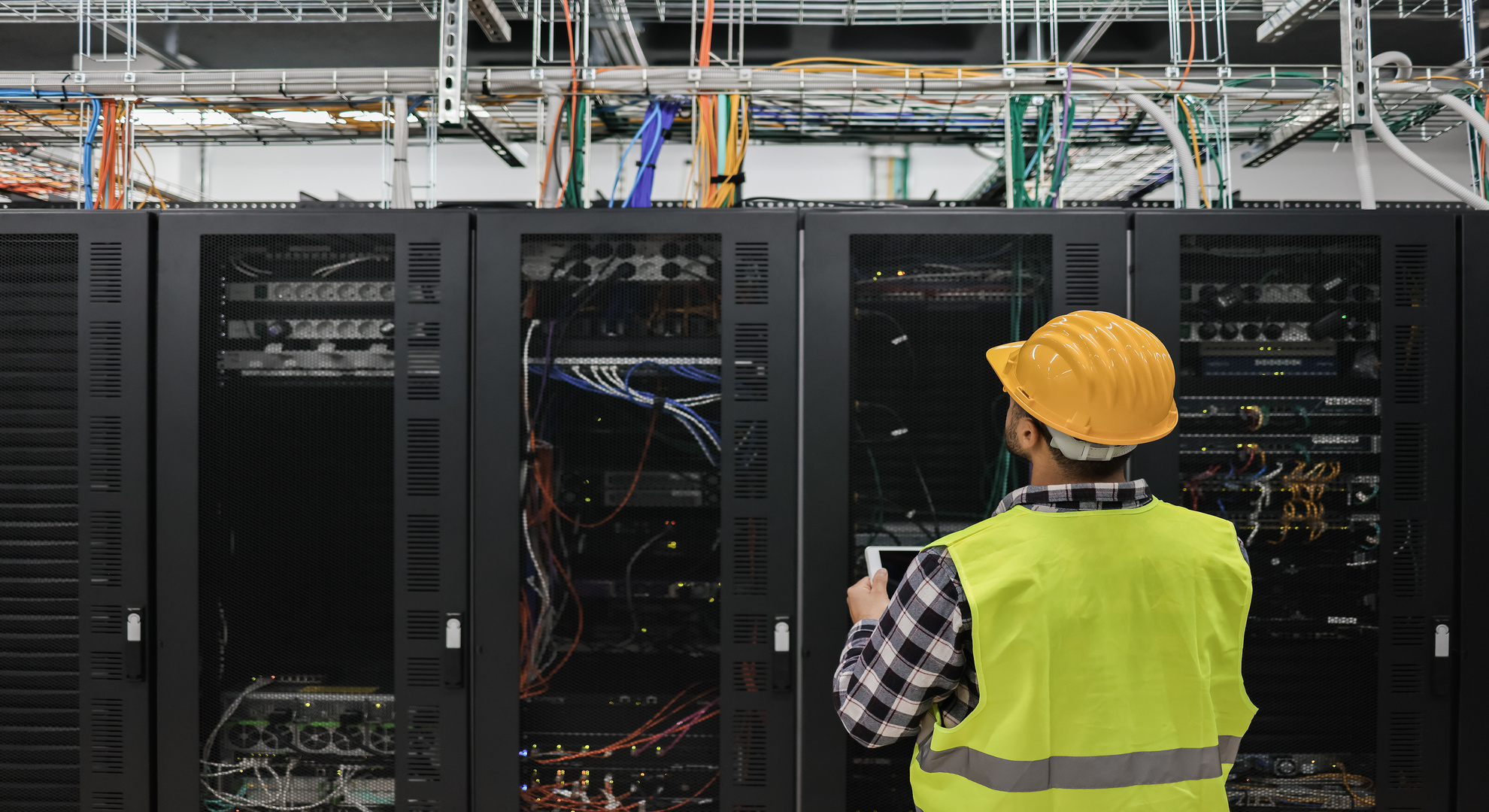
07 Mar Sustainable data centres: energy efficiency and carbon footprint reduction
In a rapid and relentless process, data centres have become strategic hubs for digital societies and economies within just a few years. Undoubtedly, the storage and processing capacity of these nodes is essential for the seamless operation of our daily lives, from the most routine activities to the most demanding ones.
However, these essential players in digitalisation come with a high energy cost. A typical data centre consumes approximately 876,000 MW/h per year—the equivalent energy usage of tens of thousands of households. Ensuring the long-term sustainability of global digitalisation requires strategies and synergies with other cutting-edge technologies.
Clean energy for today’s and tomorrow’s data centres
One of the top-priority strategies—both because it is evident and effective—is the adoption of renewable energy sources as the primary power supply for data centres. The process of decarbonisation and emissions reduction depends on investment in green energy sources such as wind, solar, and hydroelectric power. The gradual reduction of reliance on fossil fuels is the first step towards building a technologically advanced future that remains respectful of available resources and the environment in which these centres operate.
Many companies are already implementing power purchase agreements (PPAs) with renewable energy providers, ensuring a constant, monitorable, and predictable supply of clean energy. Additionally, installing solar panels on data centre rooftops and participating in large-scale wind energy projects have become common strategies to embrace sustainability and reduce the carbon footprint, both in existing data centre operations and in facilities planned for the short and medium term.
Cutting-Edge technologies for sustainability
Despite the push for green energy, additional measures are needed to enhance sustainability, given how energy-intensive data centres can be and the forecasted increase in demand. One of the primary reasons these data processing nodes consume so much energy is that they heat up rapidly when operating and require continuous cooling.
Air circulation cooling has traditionally been the standard method to combat server overheating. However, this approach has proven to be inefficient and insufficient beyond a certain performance level. This is why advanced cooling technologies are now being explored for data centres, with liquid cooling emerging as one of the most promising solutions.
In this method, all electronic components are fully submerged in a specialised cooling liquid that does not interfere with circuits, allowing them to continue functioning even in total immersion. This results in faster, more effective cooling while consuming less energy, making it highly compatible with sustainability goals. Furthermore, it enhances efficiency by allowing a higher density of servers within the same data centre space without a proportionally higher energy consumption.
Optimisation: another key factor
Optimising infrastructure is another fundamental pillar of sustainability in data centres. This involves implementing measures such as virtualisation, which consolidates physical servers into virtual machines, reducing hardware requirements and the associated energy consumption. Efficient cold and hot aisle designs also play a role by optimising airflow (for non-liquid cooling systems), preventing the mixing of hot and cold air, and improving overall cooling efficiency.
Efficient energy management allows for the implementation of monitoring and control systems that improve real-time energy consumption, identifying and correcting inefficiencies when detected. Additionally, modernising hardware and replacing it with energy-efficient, low-power alternatives can be a decisive factor.
There are still many steps and commitments to be made, but awareness of the importance of sustainability is now undeniable. As the digital transition is an unstoppable process, it is clear that the future of data centres will be inevitably linked to the efficient use of green energy.

